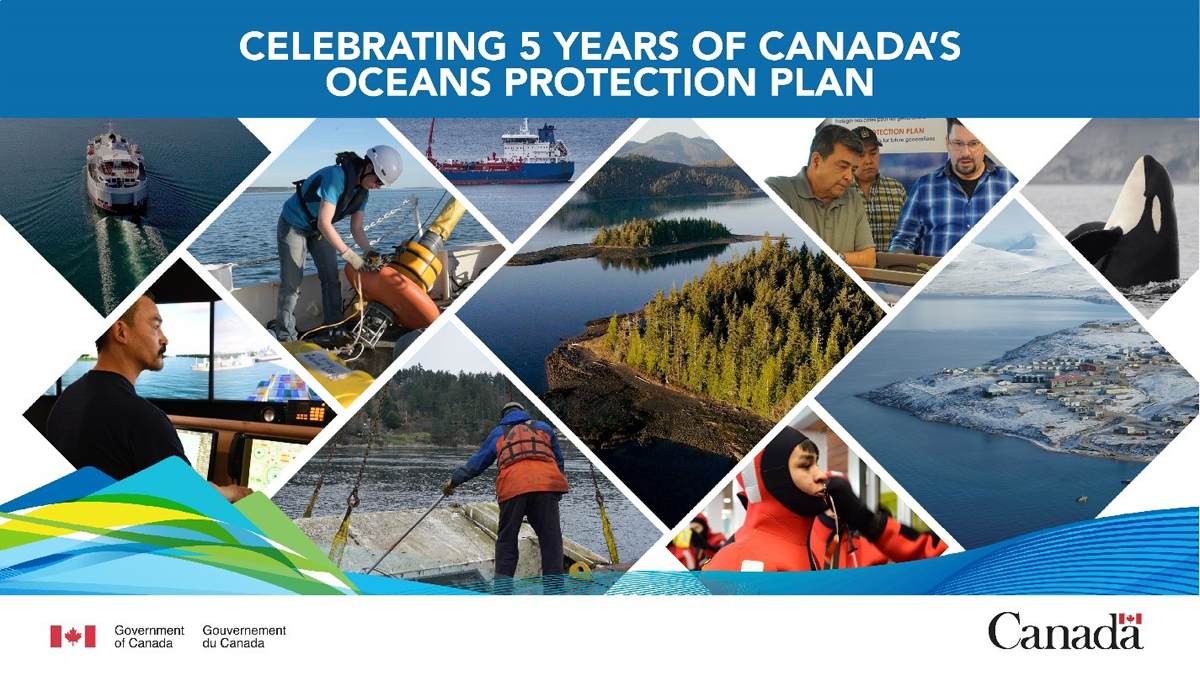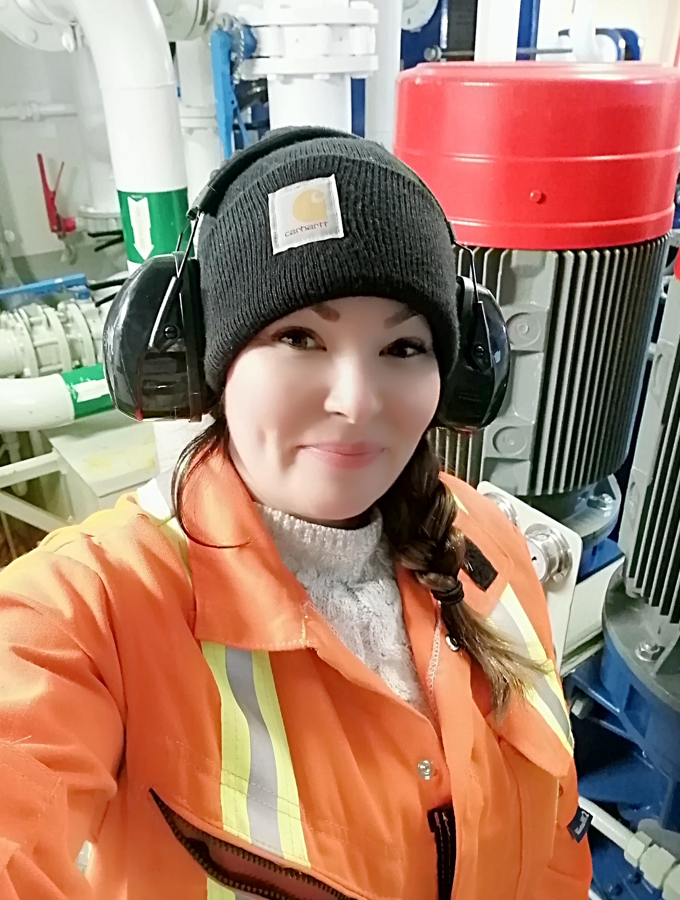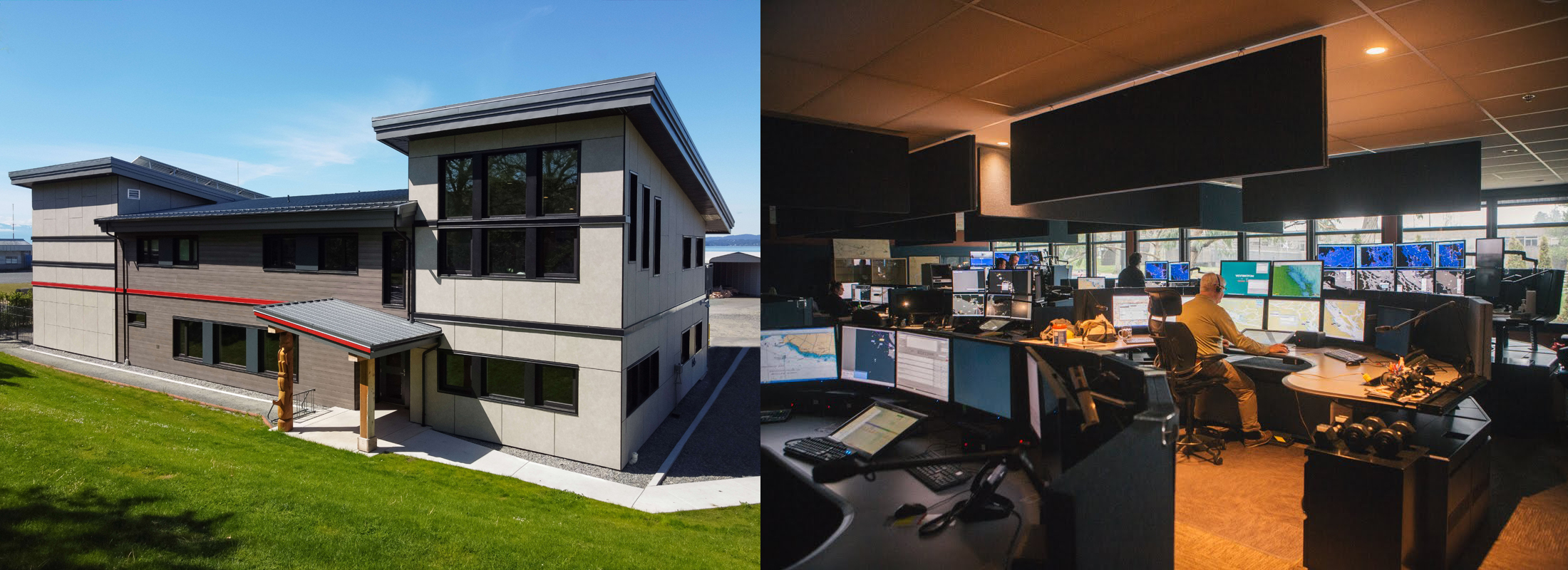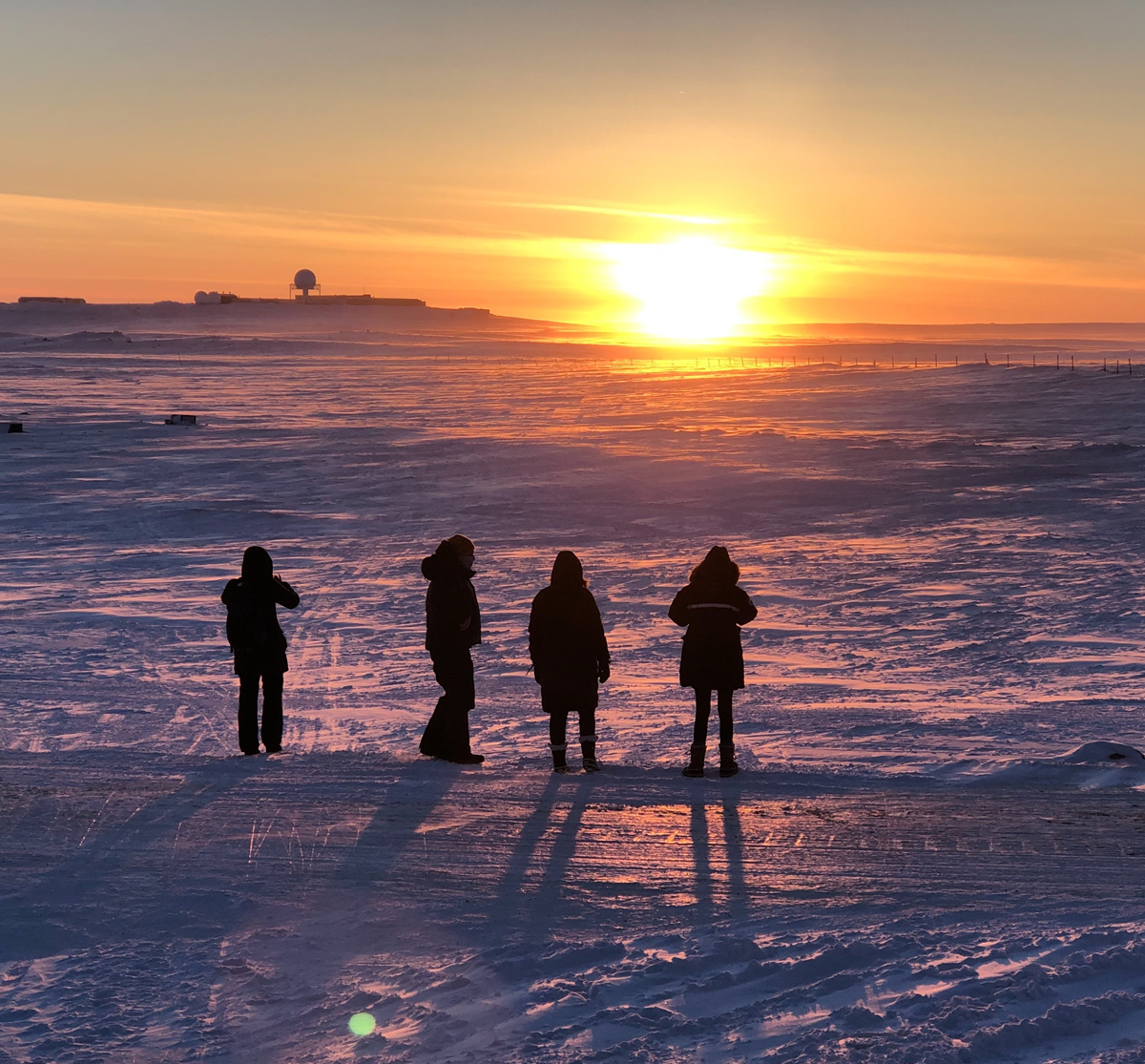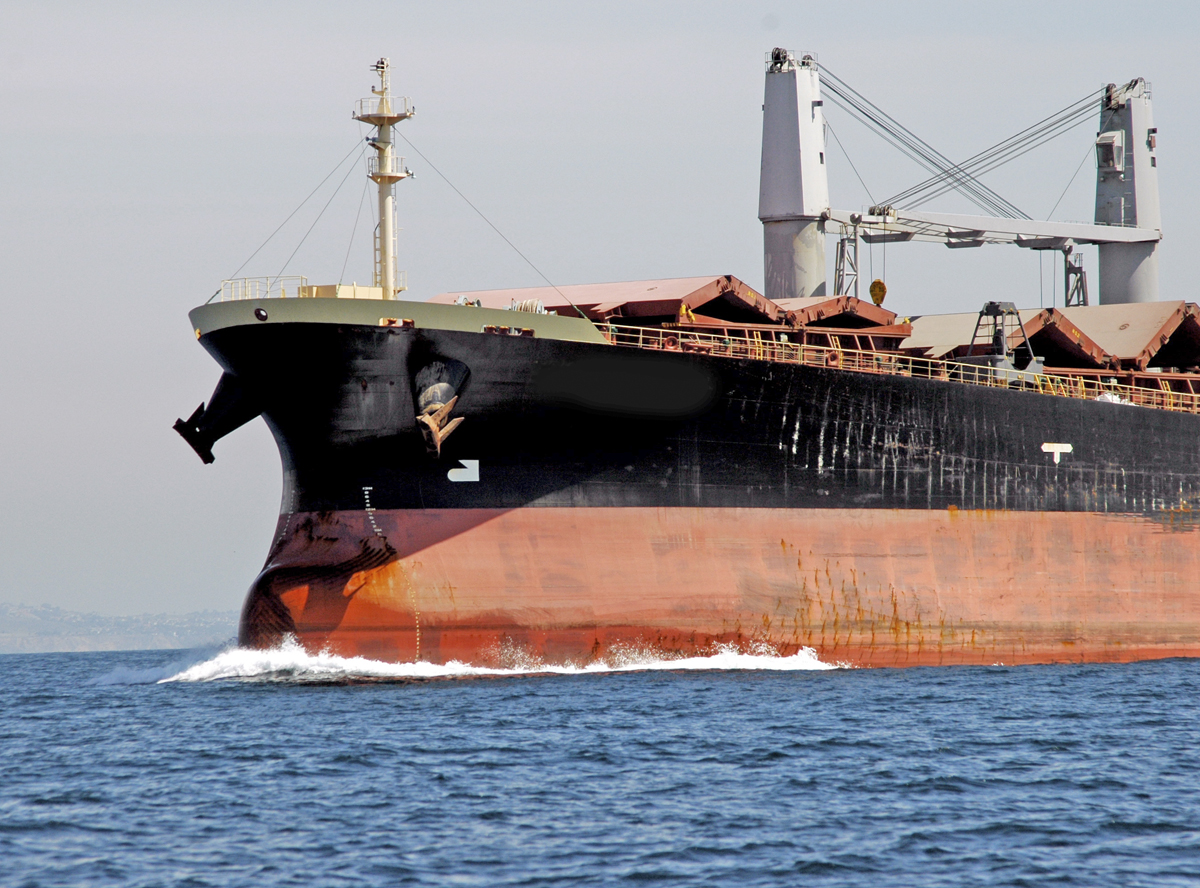On November 7, we celebrated the fifth anniversary of the Oceans Protection Plan (the Plan). The Ministers responsible for the Plan shared the importance of its work, achieved in partnership with Indigenous Peoples, coastal communities, academics, and researchers, who now have a stronger role in protecting our coasts and waterways.
“We mark(ed) the milestones achieved from the significant investments made towards Canada’s Oceans Protection Plan. Through these investments, we’ve built a system for marine protection and emergency preparedness that has exceeded international standards and preserved our coasts and waterways for generations to come. Today, marine shipping in Canada is safer, and our coastal ecosystems better protected than ever before.”
“In 2015, less than 1% of our oceans were protected, but today, 14% are now protected with an aim to protect 25% by 2025 and 30% by 2030. These efforts complement the work carried out under the Oceans Protection Plan and will help ensure not only the conservation, but the regeneration, of our marine life and ecosystems. As we look towards renewing the Oceans Protection Plan, we will continue working collaboratively to ensure Canada’s oceans are protected for generations to come.”
Stories from our coasts
My life at sea: Navigating the marine industry as a woman
Since she was young, Tara Hillier knew she wanted a career in the marine industry. With a love for the ocean and a family history of seafarers, Tara was always encouraged by her father to embark on a journey towards a career at sea.
Years later, Tara enrolled in the Bridge Watch Rating program at the Nova Scotia Community College (NSCC), funded through the Oceans Protection Plan’s Marine Training Program. This Program helps underrepresented groups gain training and find jobs in the marine sector, and it combines classroom and hands-on training to prepare students for a career in the marine industry.
Fast forward to today, Tara has secured employment in the marine industry and is now working towards her goal of holding a leading deckhand position. Her advice for women and Indigenous Peoples wanting to join the industry? Don’t hesitate to do it.
“Having Indigenous Peoples and women [in the marine industry] provides a much more well-rounded atmosphere at sea. It gives fresh eyes to the workplace, offers brilliant ideas in offering safer, more efficient ways to approach things, and provides a more pleasant environment.
If you have an open mind, positive attitude, sense of adventure, strong work ethic, and don't get seasick, then a career in the marine industry is a fantastic choice. I love my career and wouldn't trade it—it has been very rewarding.”
Do you have an OPP story to share? Email us at TC.OPPEngagement-MobilisationPPO.TC@tc.gc.ca
Changes in the Oceans Protection Plan leadership
Jane Weldon, Executive Head, Oceans Protection Plan (OPP) at Transport Canada retired from a 23-year career in the public service, including 11 years at Transport as the Director General of Marine Safety and Security and the Executive Head of the Oceans Protection Plan. For OPP, she has played a pivotal role in the coordination and success of the over 50 OPP initiatives. She was a fierce supporter of OPP and a compassionate leader for the more than 200 people and partners working across Canada to deliver OPP.
Robert Dick, Assistant Deputy Minister, Pacific Region, is now leading the Transport Canada OPP team. Robert has 26 years’ experience working in the federal government in various capacities, including in the Privy Council Office, Public Safety Canada, and Western Economic Diversification. Originally from Winnipeg, Robert holds a M.A. in International Relations from the University of Manitoba.
On behalf of the entire Oceans Protection Plan team, we would like to thank Jane for her dedication, leadership, and successful career, and welcome Robert to his new role.
Tour the new Victoria Coast Guard Station
The Oceans Protection Plan would like to welcome you virtually to the new Canadian Coast Guard Base in Victoria, British Columbia.
This new modern station is situated on Dallas Road with easy access to the harbour. The new building offers office and meeting space, as well as living quarters on the second floor for the station crew. Solar panels were installed on the roof of the building to offset a portion of the station’s energy consumption.
The station features a 14.7-metre Canadian Coast Guard lifeboat, the CCGS Cape Calvert, and a Rigid Hull Inflatable Boat, providing 24-hour response services for search and rescue, environmental response, and other activities. The marine infrastructure for the Victoria station vessels is projected to be completed by 2023. The Victoria station is crewed by an Officer-in-Charge and three crew members, including an engineer and two Leading Seaman/Rescue Specialists.
Breaking the ice and bridging connections
Every October in Nunavut, sub-zero temperatures set in and waterways start to freeze over, forming a highway that connects residents between communities and keeps food security and cultural traditions, such as caribou hunting, alive. Due to the effects of climate change over the years, the sea ice is now thinning and caribou herds are changing their annual migration patterns with the shifting sea ice formations, forcing the hunters to alter their paths in pursuit.
However, the caribou and hunters are not the only ones who need to adapt to the sea ice—with 90% of consumer goods transported by marine shipping, icebreaker vessels are faced with unpredictable and ever-changing conditions in their duty to guide marine traffic and support essential re-supply services. As icebreakers pave the way through the thickened ice, this potentially creates a risky and even life-threatening situation for wildlife or hunters to be stranded on ice floes.
To mitigate these safety risks, Transport Canada, working with a variety of partners, co-developed the first Notice to Mariners (NOTMAR) for the Kitikmeot Region, issued in March 2020. This NOTMAR means communities can be notified in advance when icebreakers are coming through and make sure hunters can continue to safely travel over the sea ice. Meanwhile, icebreakers can maintain their operations to safely guide marine traffic around or through ice-covered waters, and prevent ice jams that can cause flooding... continue reading.
Protecting Canadians from the effects of marine incidents: Liability and Compensation
The Marine Liability Act and the Wrecked, Abandoned or Hazardous Vessels Act include rules that ensure that if a marine incident happens in Canadian waters, people affected can be compensated for eligible losses. Depending on the incident, vessel owners can be held responsible for damage to property, the environment, and injuries to people.
The liability and compensation system make sure that if a marine incident happens in Canadian waters, polluters are financially responsible, even if the spill is accidental. We recently updated the liability and compensation for marine incidents section on the Transport Canada website.
Topics include:
If you need more information or have any questions, please contact: MarineLiability-ResponsabiliteMaritime@tc.gc.ca
Let’s Talk OPP
Let’s talk about the #OceansProtectionPlan:
Five years into the Oceans Protection Plan, we want to know how you think we should continue protecting Canada’s coasts, creating opportunities for coastal communities, and advancing reconciliation with Indigenous Peoples.
- How can we keep protecting our coastal ecosystems?
- How can we make marine shipping safer?
- How can we prevent and respond to marine spills?
- How can we better work with Indigenous Peoples, scientists, and the marine industry to protect our coasts?
Please help us by taking some time to add your thoughts to our discussion boards.
Latest announcements
- New system to improve marine vessel traffic flow at the Port of Vancouver and in Southern British Columbia (August 12, 2021)
- Vessel Remediation Fund Regulatory Charge – Invitation for Public Comment (August 11, 2021)
- Signing of Tsleil-Waututh – Crown Burrard Inlet Environmental Science and Stewardship Agreement (August 5, 2021)
- Inuit Nunangat Community Boat Recipients (July 21, 2021)
- The Oceans Protection Plan is keeping Canada’s coastline clean (July 16, 2021)
- Quiet Vessel Initiative Grants and Contributions for Indigenous funding recipients (June 30, 2021)
- Rankin Inlet Inshore Rescue Boat Station Seasonal Opening (June 23, 2021)
- Government of Canada Strengthens Partnership with Indigenous Coastal Communities to Enhance Marine Safety (June 21, 2021)
To subscribe or change your subscription to this newsletter, please visit the Oceans Protection Plan newsletter page on our website.

